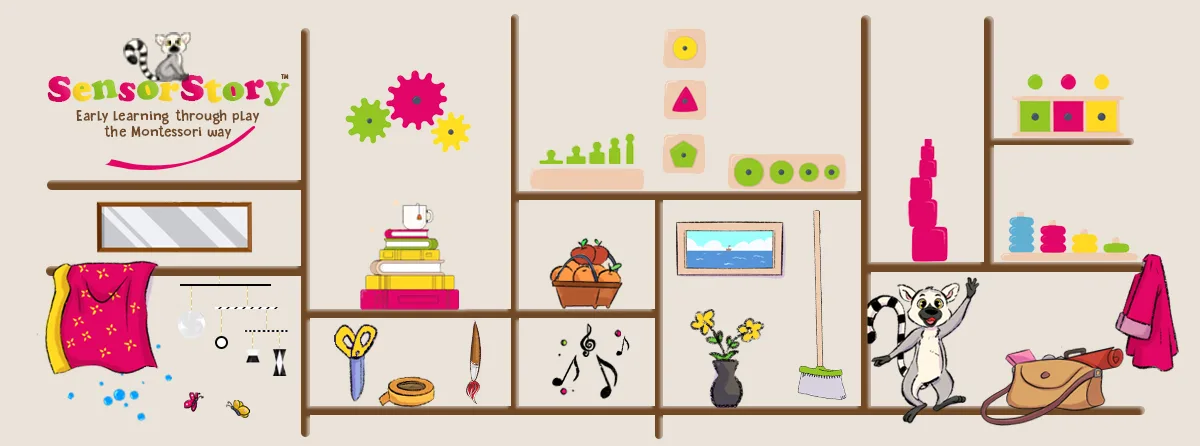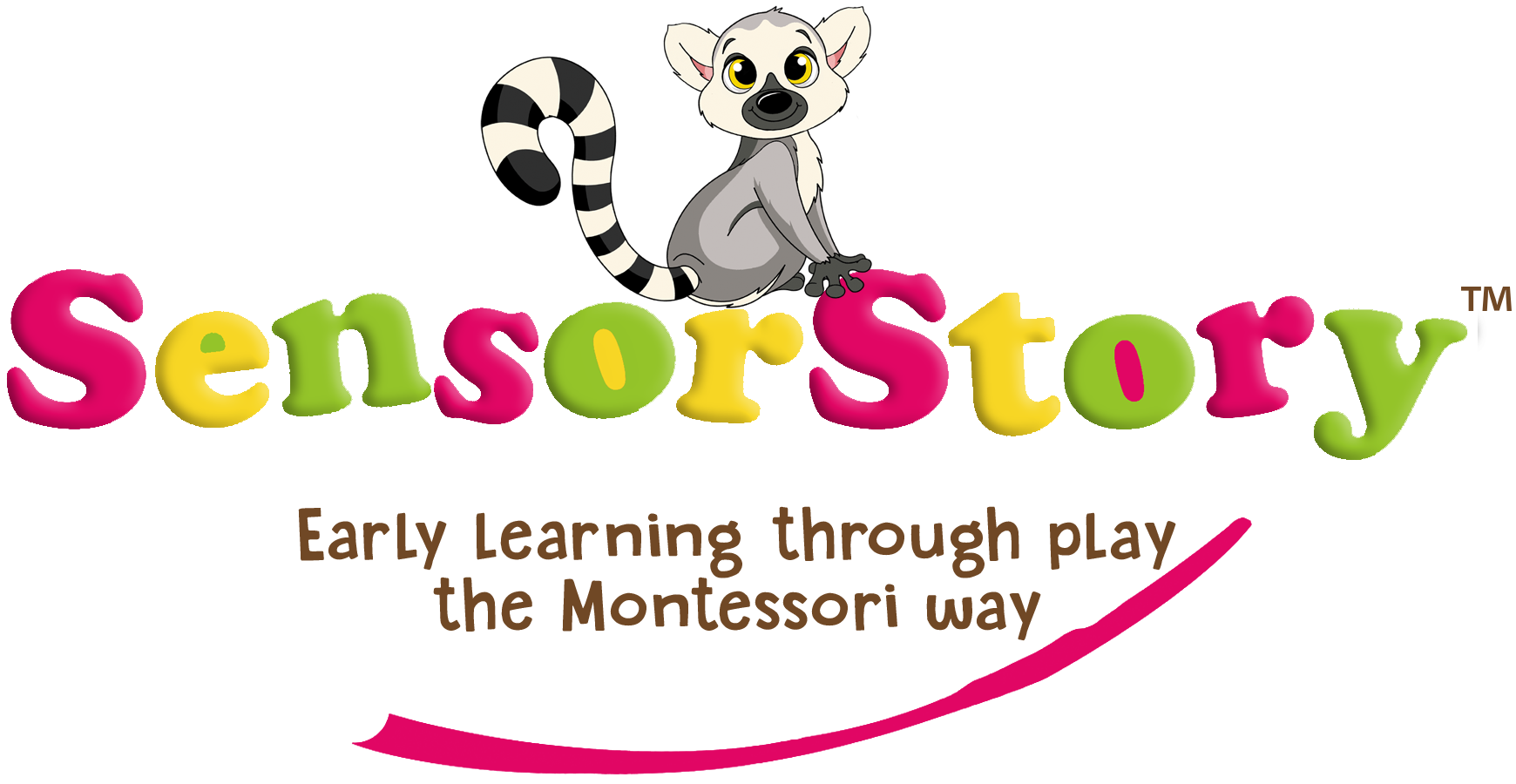We've put together a detailed list of at-home Montessori-aligned activities suitable for a 2-month-old.
Here you will see age-appropriate activities for all areas, in our Ultimate Series Of Activities to try at home, where the emphasis is on providing a prepared environment and allowing the child to actively engage in self-directed learning.
So what is my child working on mastering at this age?
Between the 0-3 month age, the primary focus is on the development of a secure attachment between the infant and caregiver. The emphasis is on meeting the basic needs of your baby, such as feeding, sleeping, and hygiene, in a responsive and loving manner. While specific skills aren't targeted for mastery at this early stage, your baby is laying the foundation for future development through sensory experiences, exploration of their environment, and the establishment of a trusting relationship with their caregiver.

1. Visual Stimulation:
* Use high-contrast black and white simple images or patterns for your baby to observe.
* Black and White Cloth Books: Use soft cloth books with high-contrast images for visual stimulation.
* Use a visually stimulating black and white Montessori Munari mobile.
* Soft, Baby-Safe Mirror: Introduce a baby-safe mirror for your baby to observe their own reflection.
2. Soft Textures and Fabrics:
* Provide soft, textured fabrics for your baby to touch and feel during supervised tummy time.
* Offer a soft, plush lovey or blanket for your baby to hold during cuddle sessions.
* Textured balls: Provide baby with different textured balls, such as soft, fuzzy, or bumpy ones, to let them feel and squeeze them.
* Safe Natural Objects: Introduce a basket with safe, natural objects like fabric, soft brushes, or rattles.
3. Auditory Stimulation:
* Music: Play soft and soothing music or sing to the baby to stimulate their hearing and language development.
* Engage in gentle, rhythmic sounds or soft humming during feeding or cuddle time.
* Maintain a quiet and calm environment to support auditory comfort.
4. Skin-To-Skin Cuddling and Bonding:
* Create a cosy and quiet cuddle space with soft blankets for bonding time.
* Engage in gentle rocking or swaying motions while holding your baby for cuddle time.
* Massage: Gently massage your baby's body to stimulate their touch and bonding with you.
5. Encourage Hand and Foot Awareness:
* Allow the baby to discover and explore their hands and feet during supervised play, avoiding swaddles, mittens and booties which can restrict movement and exploration.
* Use a soft, baby-safe gym with hanging toys for baby to bat and and reach out at.
* Encourage gentle grasping and holding of soft, textured objects.
6. Tummy Time and Movement:
* Start with short, supervised tummy time sessions to promote neck and upper body strength.
* Use a rolled-up blanket or small cushion to support baby during tummy time.
* Soft Play Mat: Provide a soft play mat for tummy time and movement exploration.
* Place visually interesting toys within baby's reach to encourage reaching and swatting.
7. Nature and Outdoor Exposure:
* If weather permits, take your baby for short outdoor walks to experience nature.
* Introduce safe, natural objects like a soft leaf or flower for sensory exploration.
8. Parental Interaction:
* Engage in conversations with your baby, narrating what you are doing or describing what they are seeing, to help them develop their listening and communication skills.
* Respond to baby's coos and sounds with warmth and respect.
* Engage in eye contact and facial expressions during interactions.
* Establish a predictable daily routine to create a sense of security.
* Observation: Observe your baby carefully and respectfully, without interrupting or distracting them, to learn about their needs, interests, and preferences.
9. Reading and Storytelling:
* Use soft, cloth or board books with high-contrast images and simple patterns.
* Allow baby time to look at and touch the pages during reading time.
* Incorporate soft, rhythmic reading to create a positive association with books and language.
10. Maintain a Calm Environment:
* Keep the environment calm and free from excessive stimulation.
* Use soft, natural lighting during nighttime routines to promote a peaceful atmosphere.
* 'Follow the child': observe baby's cues and adjust the environment accordingly
11. The Whole Child Development:
* Attend our weekly SensorStory Baby and Toddler Montessori parent-child sensory classes! Follow this link to enrol your infant here.
We hope we have given you some inpiration for activities to do with your 2-month-old!
Remember, follow the child, adapting activities based on your observation of baby's developmental stage and individual interests.
Disclaimer: Adult supervision is required for any activity suggested by SensorStory. Please follow any directions and/or warnings on the labels(s) of any materials used during such activity & be aware of any potential choking hazards or allergies.
Click here to see our
Activities To Do With A 3 Month Old
FAQ.
